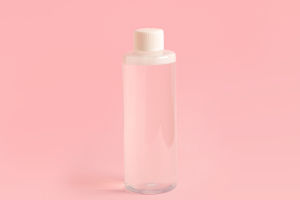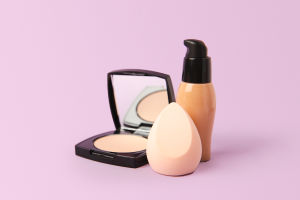Liquid foundation is one of the most popular makeup products, especially for individuals with oily or combination skin types.
Compared to other foundation types such as cream, stick, or powder, liquid foundation generally offers superior oil control.
This benefit helps maintain a matte, fresh finish throughout the day, making it a reliable option for those who struggle with excess sebum production.
One reason liquid foundation excels in oil control is its formulation. Many liquid foundations are water-based or oil-free, which makes them lightweight and less likely to clog pores.
This allows the skin to breathe while helping to regulate the amount of oil that accumulates on the skin's surface. Some liquid foundations even contain oil-absorbing ingredients such as silica, clay, or salicylic acid, which actively reduce shine and control sebum production throughout the day.
Another key advantage is the even application that liquid foundation offers. Because of its fluid consistency, it spreads smoothly across the skin and creates a seamless layer that helps control oil more effectively than heavier cream-based foundations.
This even coverage ensures that oily areas, such as the forehead, nose, and chin (often referred to as the T-zone), receive consistent oil control, preventing patches of shine from appearing prematurely.
Liquid foundation also typically sets well with powder, which enhances its oil-controlling properties. After applying liquid foundation, a light dusting of setting powder can lock the foundation in place and create a matte finish.
This combination acts as a double barrier against excess oil, giving you a longer-lasting look and reducing the need for frequent touch-ups.
Many liquid foundations are formulated with long-wear technology, specifically designed to withstand the effects of oil and sweat.
These foundations contain polymers and other binding agents that adhere well to the skin, helping to prevent the product from breaking down due to oiliness. As a result, your makeup stays intact, maintaining its coverage and finish for several hours, even in humid or warm conditions.
When compared to powder foundation, liquid foundation offers better oil control for several reasons.
While powder foundations initially provide a matte finish, they can quickly absorb oil and become cakey or uneven, especially if your skin produces a lot of sebum.
In contrast, liquid foundation provides a more flexible layer that can absorb and disperse oil without compromising the smooth finish. Additionally, powders may settle into fine lines or pores when oil accumulates, whereas liquid foundations create a smoother, more natural appearance.
Choosing the right liquid foundation for oil control requires considering your skin's needs. Look for labels such as "matte finish," "oil-free," or "long-wearing." Some foundations are specifically formulated for oily skin and include active ingredients like niacinamide, which helps regulate sebum production.
Avoid liquid foundations with heavy oils or overly moisturizing ingredients, as they can exacerbate shine and break down more quickly on oily skin.
To maximize the oil-control benefits of liquid foundation, it's important to prepare your skin properly. Start with a gentle cleanser to remove excess oil and impurities, followed by a lightweight, oil-free moisturizer.
Applying a mattifying primer before foundation creates a smoother canvas and further helps reduce oiliness. Finally, using blotting papers throughout the day can help absorb any oil that accumulates without disturbing your foundation.
Liquid foundation's ability to control oil makes it a go-to option for maintaining a fresh, matte complexion. By selecting the right formula and pairing it with proper skincare and setting techniques, you can achieve a polished, long-lasting look that stands up to the challenges of oily skin.


